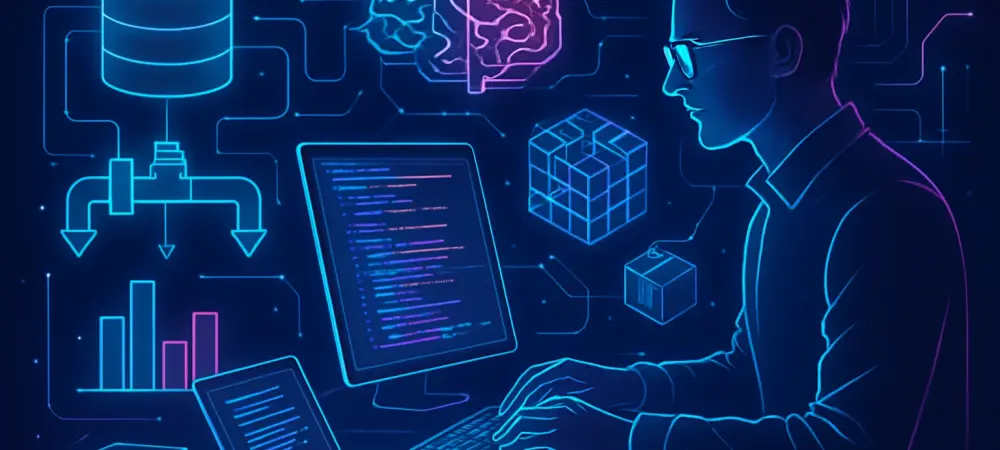Welcome to an insightful conversation with Dominic Jainy, a seasoned IT professional whose expertise spans artificial intelligence, machine learning, and blockchain. With a passion for harnessing these technologies to transform industries, Dominic has become a leading voice in the evolving landscape of data engineering for AI applications. Today, we dive into the critical role of streaming data systems and event-driven architectures in powering the next generation of AI, particularly agentic AI. Our discussion explores the skills data engineers need to thrive in this fast-paced era, the challenges of transitioning from traditional methods to real-time pipelines, and the innovative strategies required to support autonomous AI systems.
How do you see the emergence of agentic AI reshaping the responsibilities of data engineers in today’s tech landscape?
Agentic AI, which focuses on autonomous agents that can collaborate and make decisions in real time, is fundamentally changing the game for data engineers. Unlike traditional setups where we dealt with static reports or batch-trained models, these systems demand pipelines that deliver instant context and responsiveness. It’s no longer just about moving data from point A to B; it’s about ensuring that networks of AI agents—whether they’re perceiving, reasoning, or executing—get the right information at the right moment. For data engineers, this means mastering real-time data flows and rethinking how we design systems to support dynamic, distributed decision-making.
What are some of the biggest differences between traditional data pipelines and the real-time systems required for modern AI applications?
Traditional pipelines, often built around batch processing, are designed for scheduled tasks—like nightly ETL jobs or periodic reporting. They’re great for static analysis but fall short when AI needs up-to-the-second data. Real-time systems, on the other hand, are all about continuous flows. They handle streams of events as they happen, ensuring low latency and high throughput. This is critical for AI applications like retrieval-augmented generation or agentic systems, where stale data can lead to poor decisions or errors. The shift also requires a different mindset—thinking in terms of event time versus processing time and designing for resilience under constant data pressure.
Can you share a bit about your own journey and how you adapted to the demands of streaming data in AI-driven projects?
My background started in database administration and batch ETL processes, where I spent a lot of time crafting SQL queries and scheduling workflows. But as AI started to demand more dynamic data, I had to pivot toward streaming. One project that stands out was building a pipeline for a real-time recommendation engine. I had to unlearn the batch mindset and dive into tools like Kafka for event streaming. The transition wasn’t easy—dealing with continuous data meant grappling with issues like late events and ensuring no data was duplicated or lost. Over time, I adapted by focusing on event-driven design patterns and building systems that could handle millions of events without breaking a sweat.
What challenges have you encountered when designing pipelines for real-time AI systems, and how did you overcome them?
One of the biggest challenges is latency. In a multi-agent AI system, even a small delay in one stream can cascade and disrupt the entire operation. I’ve tackled this by prioritizing scalable architectures, using tools like Flink to process streams efficiently and implementing strict data contracts to avoid bottlenecks. Another hurdle is data accuracy—AI models can hallucinate or produce errors if the retrieval isn’t precise. To address this, I’ve integrated vector search and hybrid reranking directly into pipelines, ensuring the data fed to models is contextually relevant. It’s about constant monitoring and tweaking to keep everything aligned with the system’s needs.
How do you approach building feedback loops in data pipelines to support continuous learning for AI models?
Feedback loops are essential for AI systems that learn on the fly. My approach is to embed monitoring directly into the pipeline—tracking metrics like hallucination rates or factual consistency in the outputs. For instance, I’ve set up streams that capture errors or inconsistencies and feed them back for model retraining. This isn’t just a one-way street; it’s a cycle where inference informs improvement, and vice versa. I also incorporate human-in-the-loop checks for critical applications to validate data before it loops back. It’s a complex process, but it ensures the AI stays accurate and adapts to new patterns over time.
Why is securing data pipelines so critical in distributed AI systems, and what strategies do you use to maintain trust?
In distributed AI systems, especially with agentic setups, a single weak link can compromise everything. If a pipeline isn’t secure, you risk data leaks or corrupted inputs that can derail autonomous decisions. I focus on enforcing strict schema registries and data validation upstream to catch issues before they spread. I also apply exactly-once semantics to prevent duplicates or missing events, which builds reliability. Beyond that, encryption and access controls are non-negotiable to protect data in transit and at rest. Trust isn’t just a technical issue—it’s about ensuring every stakeholder, from engineers to end users, can rely on the system’s integrity.
What advice do you have for our readers who are looking to upskill in data engineering for AI and streaming technologies?
My biggest piece of advice is to dive headfirst into streaming and event-driven architectures. Start by getting hands-on with tools like Kafka or Flink—there’s no substitute for building real pipelines and seeing how they behave under load. Don’t just stick to what you know; unlearn old batch habits and embrace the mindset of continuous data flows. Certifications in data streaming can also give you a solid foundation and validate your skills to employers. Most importantly, stay curious. AI is evolving fast, and the engineers who succeed are the ones who keep learning, experimenting, and adapting to new challenges every day.

